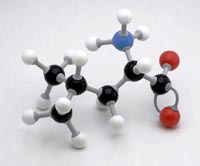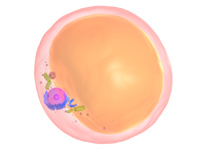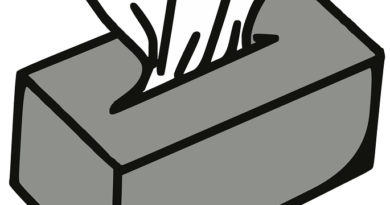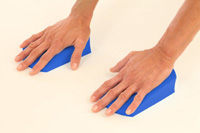Ask the Yogi: Does body fat turn into muscle?
Q: I want to lose some weight and I hear that  you can turn your body fat into muscle. Is this true?”
you can turn your body fat into muscle. Is this true?”
A: Not exactly.

The difference between body fat and body muscle is not just the composition of their molecules, but also how much energy those molecules contain. Both muscle and body fat are broken down by the body and used for energy when we need them. Fat is a very efficient way to store energy. Each gram of body fat represents a potential of 9 calories of energy for the body. Compared to a gram of muscle, which provides 4 calories of energy, body fat has more than twice the value of muscle in regards to energy per gram. Think about it this way. If you wanted to efficiently carry your money around would you rather carry two fifty cent pieces or a single dollar coin?
It isn’t just potential energy though, it is also actual weight. Per volume, muscle weighs more than body fat. This is one of the things that can frustrate a person when they begin to do things to lose weight. They eat less, they exercise more and the weight on the scale hardly changes. That is why body weight is only one of the ways we should evaluate our weight loss plan. The size of our body can change quite a bit without much of a change in our body weight. Measure your fat storage areas (such as belly and thighs) and the loss of inches will tell you how effective your method is for reducing body fat.

Another difference between body fat and muscle is what it takes for the body to maintain these body tissues. Body fat is stored in our adipose tissue. Adipose tissue is basically just empty chambers waiting to be filled with fat substance. Once in storage, fat does not take a lot to maintain. In other words the caloric expenditure of the body to keep the adipose tissue alive and well is very minimal. Much like us watching TV on the couch, fat cells just sit there doing nothing. When we gain fat, we fill up our fat cells with more fat, again, much like us sitting on the couch watching TV and eating potato chips. When we lose fat, those fat cells empty out of fat, but they are still there, just empty.
Muscle on the other hand takes a lot to maintain. Muscle is active in that it expends energy when it is used. Muscle is the leverage system of the body used to move our joints. When a muscle cell contracts it uses up molecules of ATP (adenosine tri-phosphate). Each cell of our body combines molecules of oxygen from the air we breathe and molecules of glucose or amino acids from the food we digest in a recipe that produces ATP. When that ATP is used up by the activity of the cell, more must be created. Muscles are active so they use up a lot of ATP when at work, yet they are also active even when we are at rest.
When we contract our muscles repeatedly, the body anticipates that we will be using those muscles again. The body likes efficiency because that uses less energy in the long run, but it also allows the body to survive. Since it is much easier to get going again from a rolling stop than from a dead stop in terms of energy and time, the body will seek to keep repeatedly worked muscles in a form of ‘standby’. We call this standby mode ‘muscle tone’. Muscle tone is the contraction of a portion of muscle fibers within a muscle even when that muscle is at rest. That way, when the muscle is activated, since some of the fibers are already active, it takes less energy to get the entire muscle to contract and the action time is reduced. Less initial energy and we can also escape the cave bear – you bet our body is sold on that!

 Now the big question is does our body like one of these ‘dogs’ more than the other. Yes, it does. Basically we possess a body that would really, all things considered, just like to hang out on the couch with the lap dog. Oh sure, it likes that the Jack Russel can bring it a bag of potato chips, but really, that little muscle pup is very persistent and annoying – always wants us to throw the ball.
Now the big question is does our body like one of these ‘dogs’ more than the other. Yes, it does. Basically we possess a body that would really, all things considered, just like to hang out on the couch with the lap dog. Oh sure, it likes that the Jack Russel can bring it a bag of potato chips, but really, that little muscle pup is very persistent and annoying – always wants us to throw the ball.
My advice to anyone wanting to lose body fat… play with the Jack Russel. Gain some muscle. Throw the ball.






